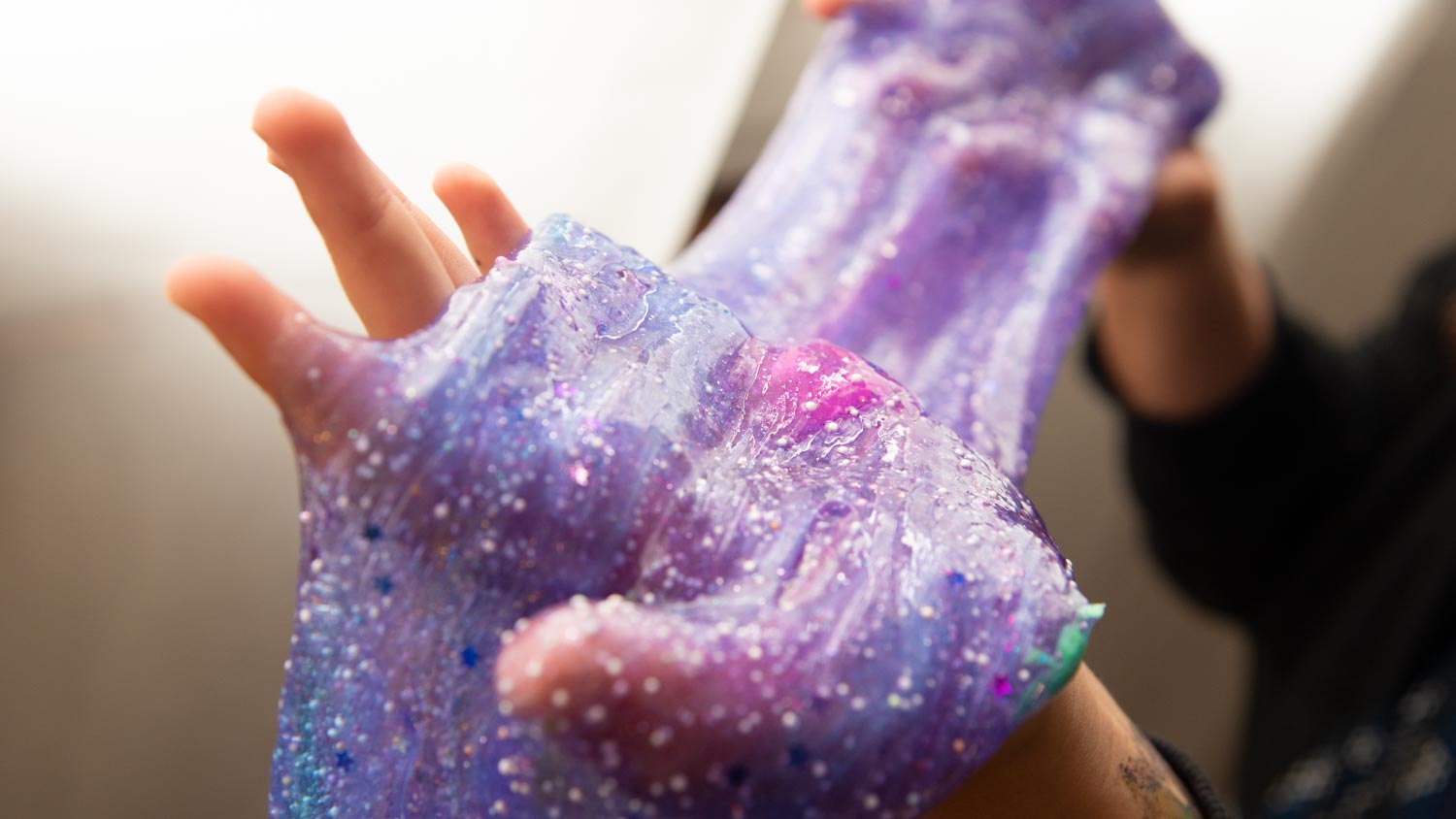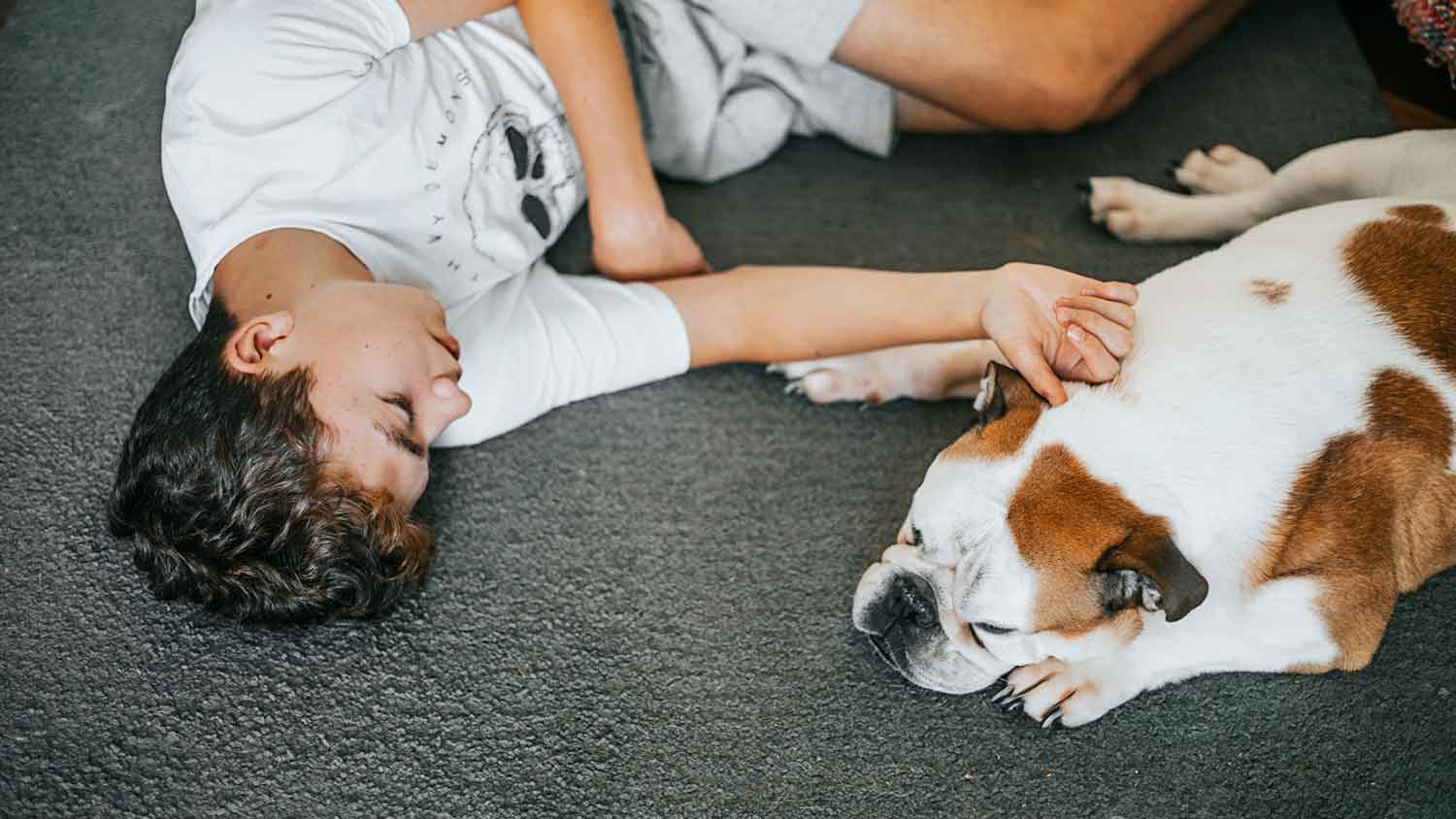
Discover average carpet cleaning costs, price factors, and tips to save. Get transparent estimates to keep your carpets fresh and your home healthy.
Say bye-bye to slime in no time


If you have little ones around, chances are you’re used to frequent spills and stains. But crayon markings and soda stains are nothing compared to slime, which can bury itself deep in your carpet fibers. The brightly colored, sticky material is a nuisance to remove, especially once it's dry. Before you opt to replace your carpet after a slime spill, we’ll teach you how to get slime out of carpet and make your space look good as new.
Originally manufactured by Mattel, slime came on the scene in the mid-1970s as a squishy material made from guar gum. The trend picked up again around the 2000s when people began making their own slime, thanks to tutorials on social media.
Since it’s so stretchy and slimy, kids enjoy playing with the texture and molding it into different shapes and sizes. These days, kids and grownups alike can make slime from glue, Borax, food coloring, and water.
Because it’s made from a mixture of Borax and water, slime is an ooey, gooey substance that can cling to the fibers in your carpet or rug and make removal a true chore. It can harden into clumps that become even more tedious to remove if they go unnoticed. Plus, this glue-like material often comes in neon-bright colors, leaving behind a residue that can stand out from the rest of your flooring.
It’s best to tackle slime at the first sign of impact since it gets more difficult to remove slime from carpet as it hardens. Once the sticky substance hits the surface of your rug, it’s time to grab an ice cube, a washcloth, some warm water, and a cleaning solution, and get down to business.
The sooner you notice the slime, the better since fresh slime is easier to clean up than dried slime. If you’re dealing with fresh slime, apply ice or an ice pack to the area for 10 to 15 minutes to freeze the slime. Once it’s frozen, you can scrape the slime out of the carpet and vacuum the spot.
If you’re trying to remove dried slime from carpet, you’ll need to soak a cloth with warm water and blot the stain to soften it. Once you’ve softened it a bit, cover your hand with the cloth and use a plucking motion to remove larger pieces from individual carpet or rug fibers. If large pieces still remain, try removing them with a butter knife.
Cover the remaining slime with a mixture of 2 teaspoons of dish soap and 2 cups of water or 1 cup distilled white vinegar and 2 cups of water. Cover the stain with a wet cloth and let it sit for an hour or two before removing the cloth. Once the solution has had time to seep into the slime, gently run a bristle brush in circular motions to loosen any leftover pieces.
Once you remove slime from the carpet, let the carpet or rug completely dry, then vacuum the area to get any debris out. After you’ve vacuumed, you should get a good sense of whether the stain has lifted or if you need to repeat the steps above to get better results.

You can apply all the tips for stubborn carpet stains that you can find, but if the slime is still sticking around, it may be time to hire a local carpet cleaning company. These pros will have the equipment and experience to remove the slime from your carpet with confidence. Plus, their work likely has a warranty you can rely on if the stain appears again a few days later.
If the slime spot is small, you can probably tackle it on your own for as little as $10 or less, especially if you have some of the cleaning solutions on hand. Otherwise, you’ll likely pay $120 to $300 for a pro to clean the carpet. Carpet cleaning costs vary depending on the square footage, material, and type of equipment and solution used, so chatting over the job with a pro will help get you a more accurate estimate.
Yes—you can apply the same steps mentioned above to get slime out of clothing. If you’re working with a cotton T-shirt, you can even try applying oxygenated bleach or laundry detergent to the stain before throwing it in the washer.
Upholstered furniture can fall victim to slime just as easily as carpets can, and in this case, you can try to rub the slime with an ice cube and gently scrape it away. If that doesn’t tackle the job, try pouring a few drops of rubbing alcohol or club soda on the spot. Once it penetrates the area, scrape the slime with a butter knife and blot it dry. Be gentle here, as the material on the furniture may be a bit less sturdy than your carpet.
Like bubblegum, slime can be hard to safely remove from hair if you’re not using the right products. Luckily, dish soap or gel-based hand sanitizer can do the trick. Simply apply either to the affected area, rub it in, and rinse thoroughly. Start small and again, be gentle. It’s best to follow up this treatment with shampoo and conditioner to remove any leftover traces of slime.
From average costs to expert advice, get all the answers you need to get your job done.

Discover average carpet cleaning costs, price factors, and tips to save. Get transparent estimates to keep your carpets fresh and your home healthy.

Do carpet cleaning companies move furniture or are you responsible for the heavy lifting? Learn if this is included in the service and if it’s worth hiring a pro.

Wondering how often to get your carpets professionally cleaned? Learn the ideal schedule to keep your home fresh, clean, and allergen-free year-round.

Sure, we love cuddling and playing with our pets, but cleaning up pet messes is a different story. Nobody enjoys coming home to shedding or accidents. With these tips, you can clean your pet’s messes more effectively and, in turn, protect your carpets.

Keep your carpet looking its best and avoid hiring a professional carpet repair company by learning how to fix matted carpet yourself.

Dirty carpets harbor dirt and bacteria, making your home look drab and unkempt. This guide shares what to use to clean carpets like a pro without the price tag.